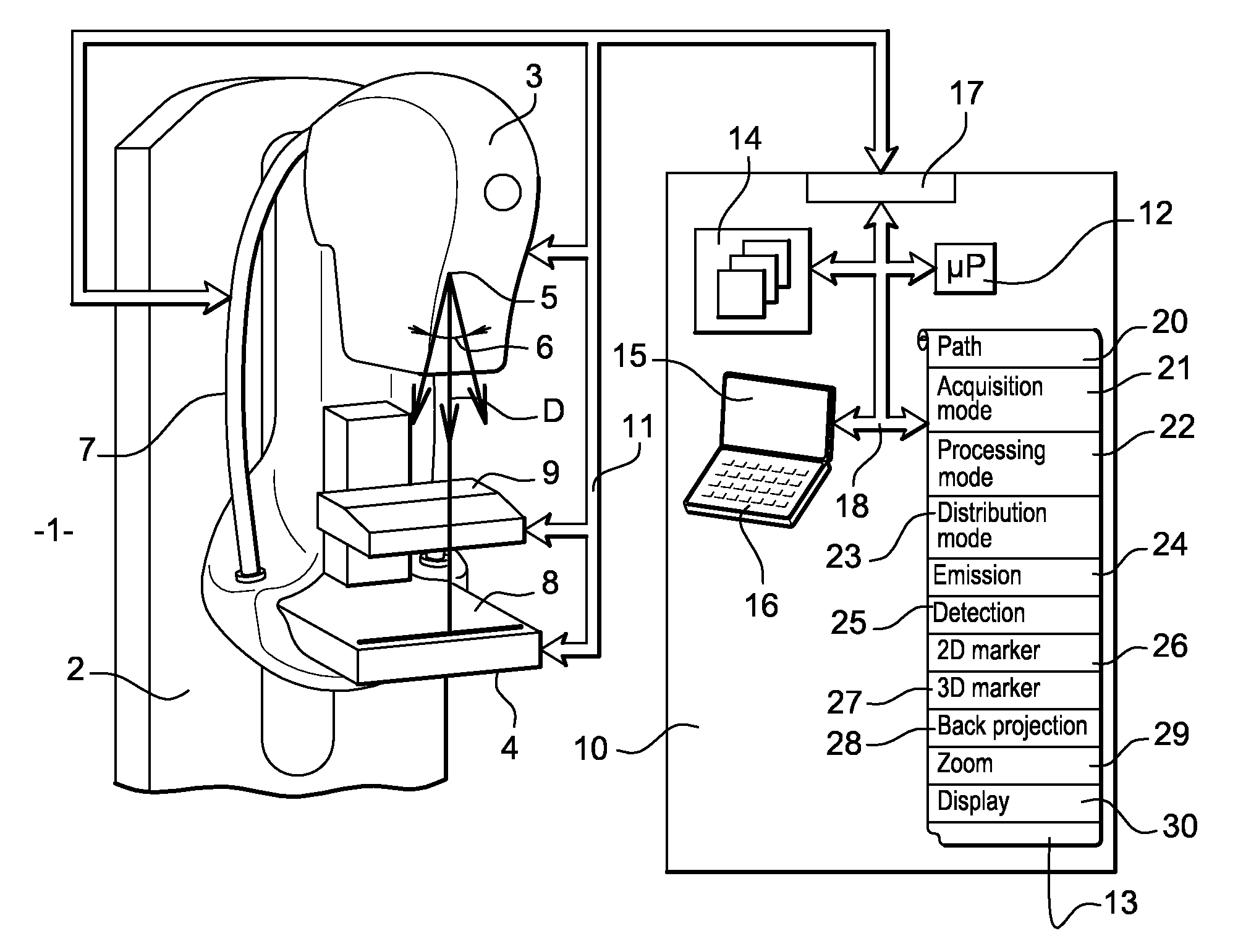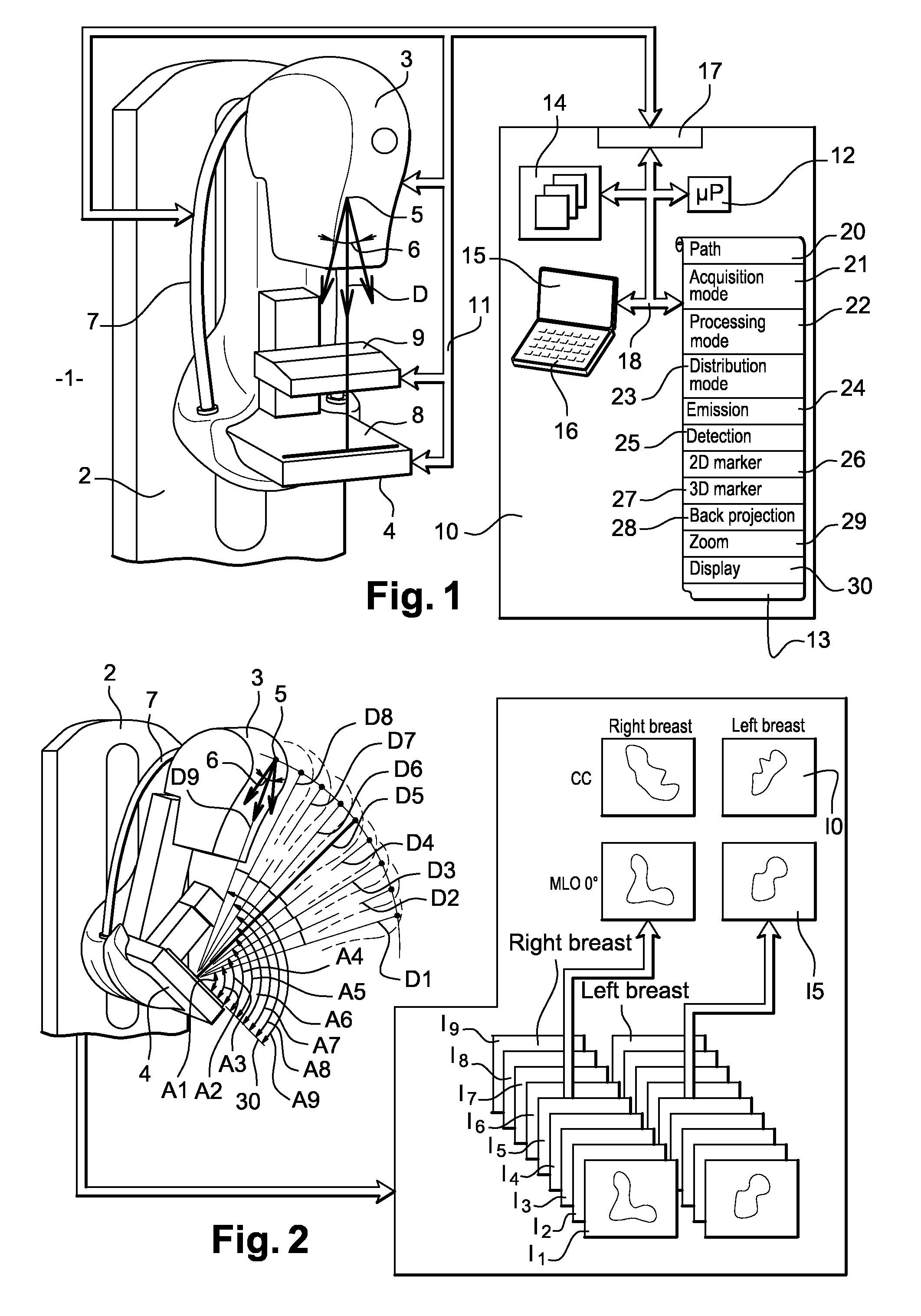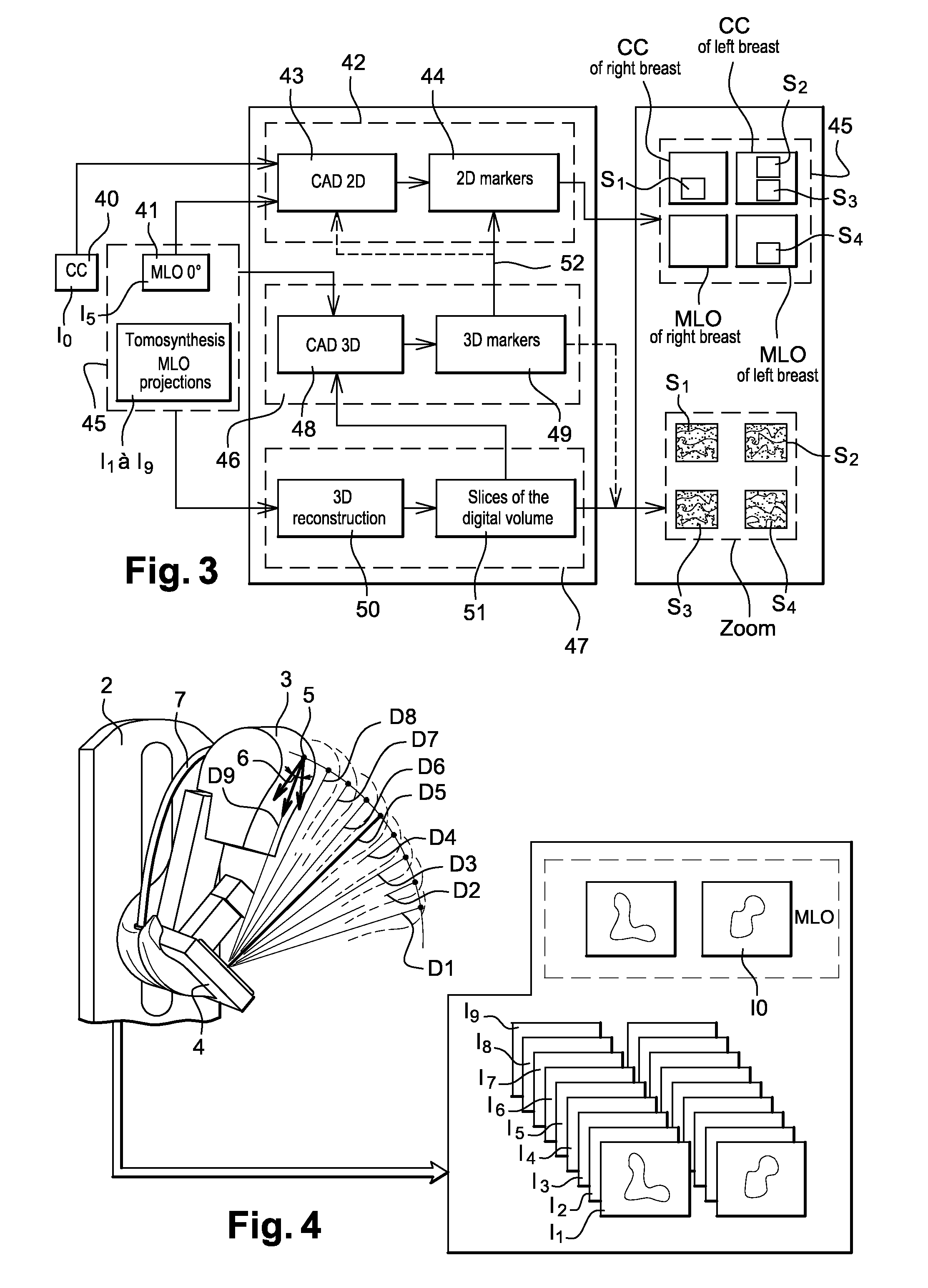X-ray device and image-processing method
a technology of x-ray and image processing, applied in the direction of instruments, patient positioning for diagnostics, applications, etc., can solve the problems of large quantity of information to be managed, certain calcium deposits or certain opacities are not spotted, and new tomosynthesis mammography devices have limitations, etc., to facilitate the detection of radiological signs, improve the quality of life, and facilitate the identification
- Summary
- Abstract
- Description
- Claims
- Application Information
AI Technical Summary
Benefits of technology
Problems solved by technology
Method used
Image
Examples
Embodiment Construction
[0042]FIG. 1 shows an X-ray device, especially a mammography machine, according to the invention. This X-ray device 1 has a vertical column 2. On this vertical column, there is a hinged arm 7 bearing an X-ray-emitting tube 3 and a detector 4 capable of detecting the X-rays emitted by the tube 3. This arm 7 may be oriented vertically, horizontally or obliquely. The tube 3 is provided with a focus 5 which is the X-ray emitting focus. This focus 5 emits an X-ray beam 6 along the direction of emission D.
[0043] The arm 7 is hinged on the vertical column 2 in such a way that it enables the tube 3 to be shifted along a path in the shape of an arc of a circle while leaving the detector 4 immobile. Other arrangements are possible by which the tube can be shifted in a plane or in a sphere portion. The tube 3 can then occupy different positions distributed in swiveling between two extreme positions. These two positions are for example symmetrical to each other relative to the perpendicular to...
PUM
 Login to View More
Login to View More Abstract
Description
Claims
Application Information
 Login to View More
Login to View More - R&D
- Intellectual Property
- Life Sciences
- Materials
- Tech Scout
- Unparalleled Data Quality
- Higher Quality Content
- 60% Fewer Hallucinations
Browse by: Latest US Patents, China's latest patents, Technical Efficacy Thesaurus, Application Domain, Technology Topic, Popular Technical Reports.
© 2025 PatSnap. All rights reserved.Legal|Privacy policy|Modern Slavery Act Transparency Statement|Sitemap|About US| Contact US: help@patsnap.com



